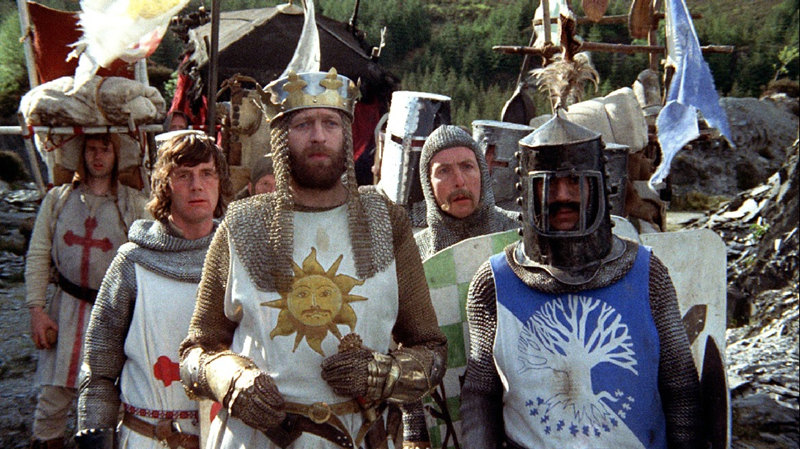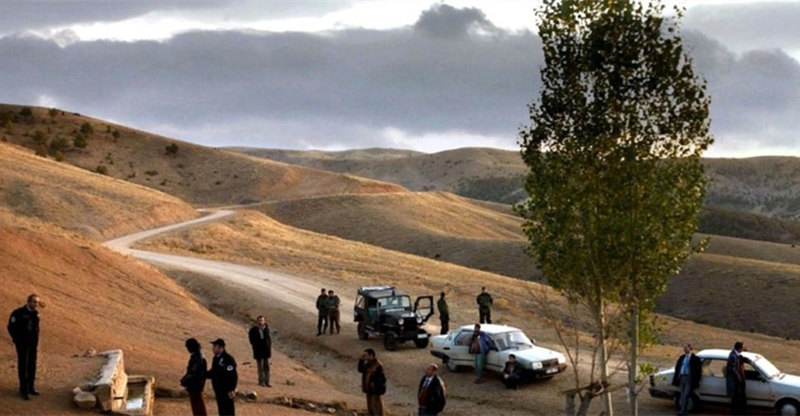Woody Allen is no stranger to the world of cinema. Since making his debut movie, “What’s up Tiger Lily?” in 1966, Allen has directed about forty-four feature films, thus making him one of the most prolific filmmakers in Hollywood. That’s like a film a year up until the release of his recent film, “Midnight in Paris” (2011). Allen’s actual golden run started in 1973 with the critical hit “Sleeper,” and it pretty much ended in 1990 with “Alice.” It is in the earlier period that he directed one of my favorite movies, “Annie Hall” (1977), following it with an equally entertaining movie, “Manhattan” (1979). Among others that he released in this period were critically acclaimed films like “Love and Death” (1975), “Stardust Memories” (1980), “The Purple Rose of Cairo” (1985), and “Hannah and Her Sisters” (1986). He worked closely with Diane Keaton in the ‘70s, whereas the ‘80s was the period when Mia Farrow starred in every Woody Allen movie. The sixteen-year golden run pretty much sums up Woody Allen’s filmmaking career.
Allen’s signature style is a mix of realistic stories with a flavor of comedy. Some critics describe Allen’s movies as continuous chatter, while for others his movies are often always rewarding. Stories about families, love, and relationships, including specific feminist pieces, form the core of Allen’s body of work. But something ended after the late ‘90s, and I felt we lost Woody Allen’s exquisite filmmaking qualities. There were several misfires consistently coming from Allen’s cannon after the ‘90s. For me, in the late period of Allen’s career, only two movies stand out: “Bullets over Broadway” (1994) and “Match Point” (2005). Even though I was initially skeptical of seeing Allen’s name attached to “Midnight in Paris,” in the end I was surprised how the movie entertained me. As such, the film shows Allen is coming back to form.
The allure of “Midnight in Paris” lies in the fact that it is not an adventure trip through picturesque Paris. In fact, Paris is just used as a backdrop in this soul-searching adventure. The natural beauty is sucked out, and you are left with quirky, memorable characters. After the movie ended, I was convinced that I saw a Woody Allen film from the ‘70s. If Alvy and Annie (famous characters from “Annie Hall”) had met in Paris, I am sure Allen would have made this film some thirty-years ago. But the best part of the film is the way in which Allen composes the story in the present time and the past; this style is reminiscent in his ‘70s and early ’80s movies. With the new effort, Allen seems comfortable behind the camera; the script moves at a brisk pace; and the actors perform tremendously well here. I call this as an important postmodern piece in Allen’s filmography, a blend of “Annie Hall,” “Zelig” (1983), and “The Purple Rose of Cairo.” You don’t have to see Allen’s earlier work to enjoy “Midnight in Paris,” but you will appreciate Allen’s recent effort more if you have seen his earlier things. And you will further appreciate the movie if you are familiar with Luis Buñuel, Salvador Dali, Ernest Hemingway, and Pablo Picasso. Even then, Allen has crafted the plot in such a manner that will eventually resonate with any audience.
Allen has always been fascinated with the idea of developing a fantasy world around his realistic characters. It is his idea of escaping from the reality that opens the door to introspection by bringing the characters to a life-changing situation. We meet one such character, Gil (Owen Wilson), who is in Paris with his finance, Inez (Rachel McAdams). A Hollywood screenwriter, Gil aspires to finish his first book. Even though he has finished the book, he feels the book is not quite done yet. He secludes himself in a hotel room so that he can add the final touch-ups to the book. One night while Inez is busy dancing with her friends, Gil decides to go back to the hotel alone. Along the way, he rides with strangers in a car and soon realizes that he has been teleported to the 1920s. Soon, he meets a set of famous, real-life characters, long gone: Ernest Hemingway (Corey Stoll), Gertrude Stein (Kathy Bates), F. Scott Fitzgerald (Tom Hiddleston), Adriana (Marion Cortillard), Pablo Picasso (Marcial De Fonzo Bo), Salvador Dali (Adrian Brody), Zelda Fitzgerald (Alison Pill), and many more. For Gil the fine line dividing reality from fantasy soon begins to taper off, and he must make a vital choice in the present time.
At a profound level, “Midnight in Paris” is about finding one’s inner self. Gil’s journey to the 1920s forms a significant portion of the film. As a singular piece, the film bears similarity to Allen’s earlier movie “The Purple Rose of Cairo,” in which Allen masterfully superimposes reality and fantasy. The main protagonists in both films desire for something different in their lives, something emotionally tangible, and something that holds a deeper meaning in life. Being emotionally distant in their spaces, they are willing to escape from reality so as to immerse themselves in the fantastical world around them. Call it a head-trip, but, nonetheless, the film’s thematic design lends itself to a journey of self-realization for its characters. The ultimate revelation through the journey decides the path chosen by the characters.
Through the course of the trip, Gil begins to question the meaning of his relationship to Inez. Gil’s initial interaction with Inez provides an inside view on their relationship. Of course, the couple is a complete mismatch–something Gil knows deep inside–but he’s unable to express it. Always dominating all situations, Inez doubts Gil’s writing skills and never values Gil’s opinion in any matter. The situation is further worsened by the fact that Inez is hiding behind her rich parents, and they also don’t back down in humiliating Gil. Gil’s time travel brings unexpected happiness to his life. It is in these segments Gil meets the leading literary figures during the time. He discovers a true writer in his soul. Meeting the famous artists and writers in the dream world charges his batteries. The journey becomes a source of inspiration for Gil, who otherwise felt his book was no good. Moreover, these segments form the heart and soul of the movie, and each character from the ‘20s brings something different to the table. Along with the actors’ lively performances, the film offers a vibrant artistic texture from the past. Credit goes to Allen for perfectly creating a semi-period piece from the Twenties.
As a mild-mannered scriptwriter, Owen Wilson’s character drives the plot of the movie. We see what he sees, and we feel his emotions as well. We come out appreciating his predicament in finishing the novel, and in the process we see a personality imbalance developing between Gil and Inez. More so, we as viewers become Gil’s fans and continuously cheer for him in this soul-searching trip. Owen Wilson delivers a believable performance, his best to date since “Bottle Rocket” in 1996. His reactions–as he weaves in and out of the ‘20s world–sparkle with genuine humorous emotional moments. The flawless set designs, along with stunning cinematography, help in successfully creating the time period. The beautiful period sets act as a metaphor to represent Gil’s perception of the artistic world. We are taken through the nightclubs of Paris, with Gil acting as a guide. Gil’s persona is a representation of Woody Allen himself, who wants to be part of an artistic revolution happening in France and the U.S. at that time. Nonetheless, Allen pays tribute to famous artists and writers who shaped the arts scene forever. Literature, arts, and film are all beautifully wrapped up in a trivia-like format. In a simplistic term, “Midnight in Paris” is a huge canvas on which Allen has composed a collage of important artistic personalities.
This summer offers a packed slate of superhero movies like “Green Lantern,” “Transformers,” “Captain America,” “Thor,” “X-Men: First Class,” and many more, that are purely escapist forms of entertainment. On the other hand, Woody Allen’s “Midnight in Paris” is a marvelous fantasy story that will amaze you with its simplistic approach to storytelling and its tender approach in presenting delicate relationships. With no loud explosions or CGI effects, “Midnight in Paris” has enough power to draw an audience; it is another form of escapist entertainment. More important, the film shows why Woody Allen is still considered one of the greatest American filmmakers alive today. Allen’s dexterity and experience behind the camera enable him to make the film’s transition between two eras seem like child’s play. I think it is fair to say that “Midnight in Paris” is Allen’s best movie in the last fifteen years, and it is certainly worth one’s time.


